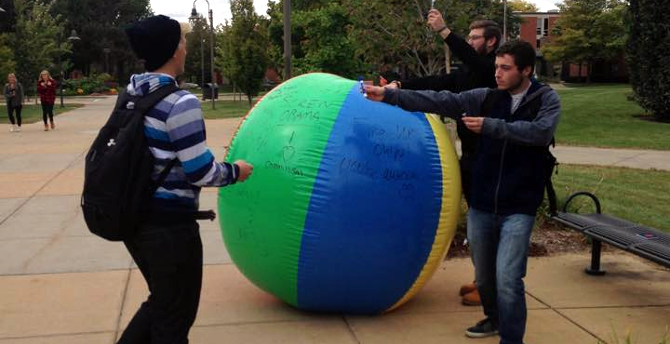
Free speech is under assault at college throughout the United States, as demonstrated by recent cases of progressive students shouting down and disrupting invited speakers on campuses in California and Vermont. The Foundation for Individual Rights in Education (FIRE) has found that 39.6 percent of the 449 schools it surveyed maintain “severely restrictive, ‘red light’ speech codes that clearly and substantially prohibit constitutionally protected speech.” The libertarian campus organization Young Americans for Liberty (YAL), takes freedom of expression seriously through its Fight for Free Speech project, through which local activist chapters educate other students about their constitutional rights, organize petitions, pass out pocket copies of the U.S. Constitution, and build “Free Speech Walls” that allow students to write whatever they want.
“The Fight for Free Speech has been one of YAL’s most successful national activism projects to date,” explains Matthew Boyer, YAL communications director. “It is incredibly popular among our young leaders on campus. However, it has received a great deal of pushback from progressives and bureaucrats on campus. YAL chapters often find themselves battling with administrators over unconstitutional speech policies on their respective campuses or confronting the politically correct culture that too often stifles diverse opinions.”
YAL chapters have also turned the “Free Speech Wall” idea into a mobile activity by turning giant inflatable beach balls into a “Free Speech Ball,” an idea that has been used on campuses like Central Michigan University, Pennsylvania State University, Clemson University, and Northwestern University. Each handwriting-covered ball has served as a rolling symbol of free speech on campuses where free expression can be a contentious subject.
“YAL’s national Fight for Free Speech began in 2015 as an effort to raise awareness about unconstitutional speech codes and zones on America’s college campuses,” Boyer explains. “The new trend started a few years ago during Constitution Week, which is a traditionally very active week for YAL activists. … The two goals of the national Fight for Free Speech campaign are to abolish unconstitutional campus speech policies and foster a culture on campus that respects the First Amendment and the free expression of ideas.”
Less than a decade after it was founded, YAL has grown to encompass more than 900 chapters and 300,000 members. The organization has also provoked a reaction from college administrations that want to exclude certain ideological views from being heard on campus.
“It has received a great deal of pushback from progressives and bureaucrats on campus,” Boyer continues. “YAL chapters often find themselves battling with administrators over unconstitutional speech policies on their respective campuses or confronting the politically correct culture that too often stifles diverse opinions.”
Students with the YAL chapter at Kellogg Community College in Michigan, for instance, were arrested after refusing to stop passing out pocket copies of the U.S. Constitution. At the University of Delaware, campus police made YAL members censor a Free Speech Ball that contained profanity.
The Free Speech Balls continue to be a hit on campuses throughout the United States, and although they primarily serve as symbolic fun for students, the campaign’s practical objectives are also succeeding. Since it first began Fight for Free Speech, YAL has helped to overturn 24 unconstitutional campus speech policies, restoring free speech rights to tens of thousands of students.



Leave a Reply
You must be logged in to post a comment.